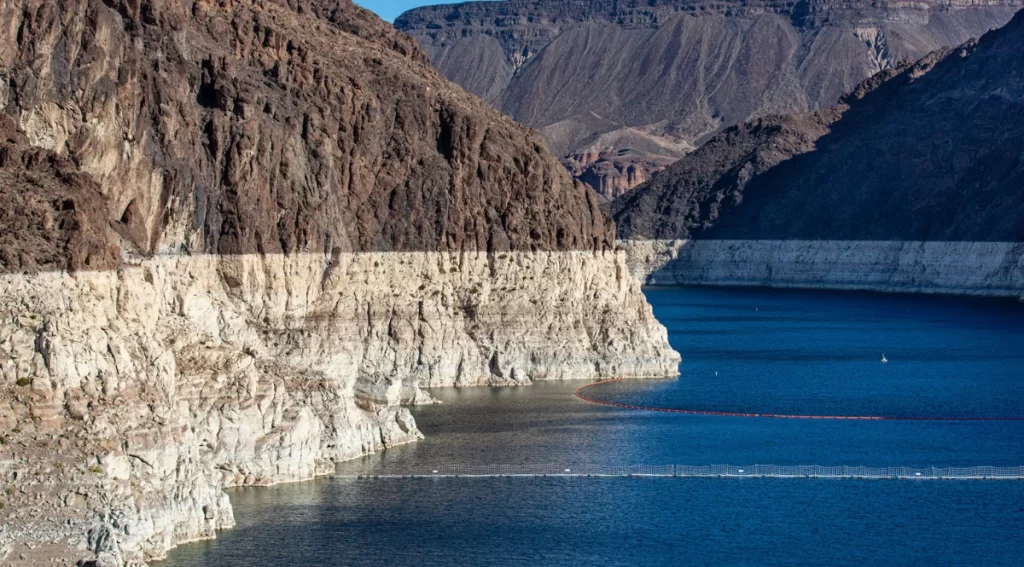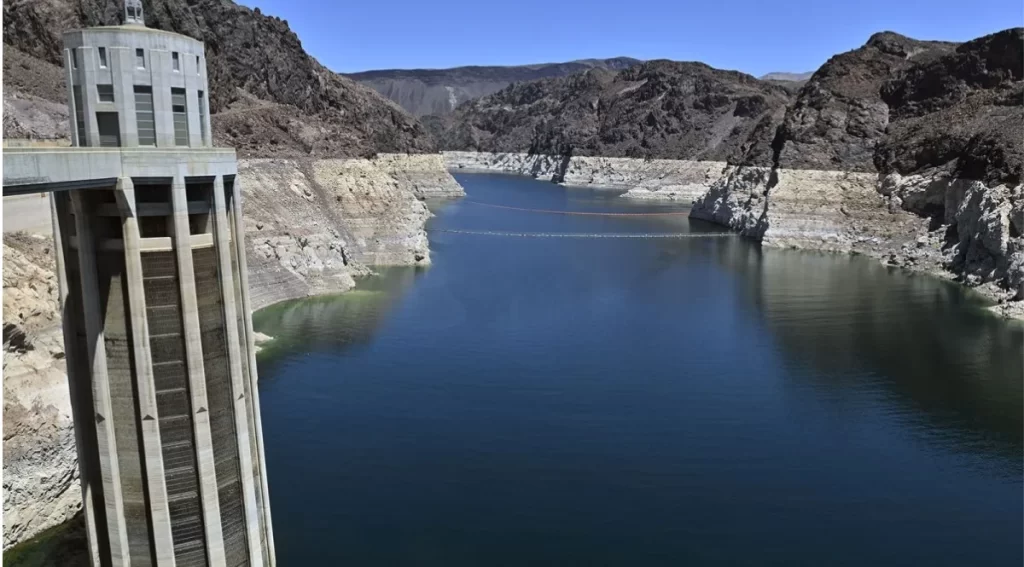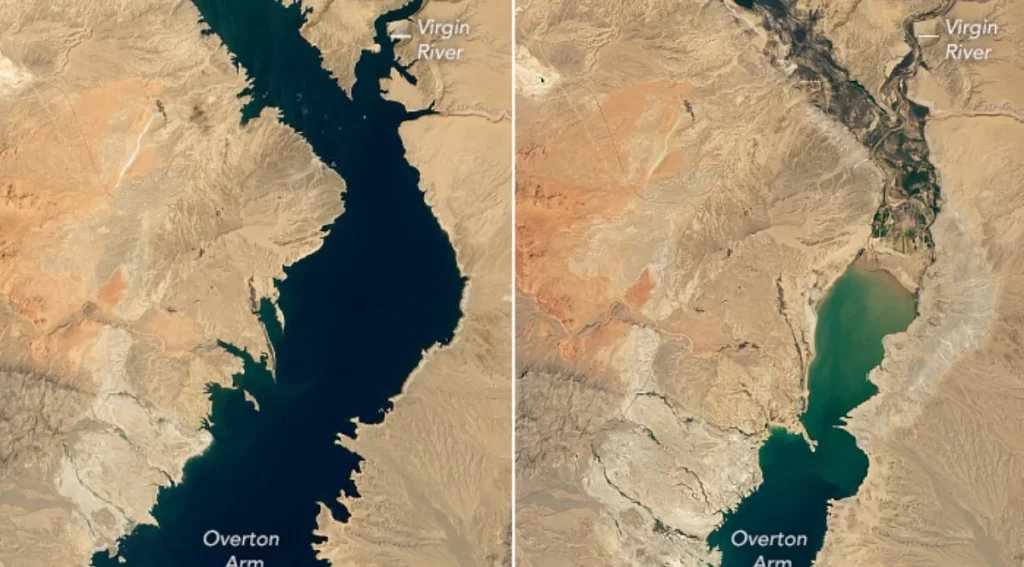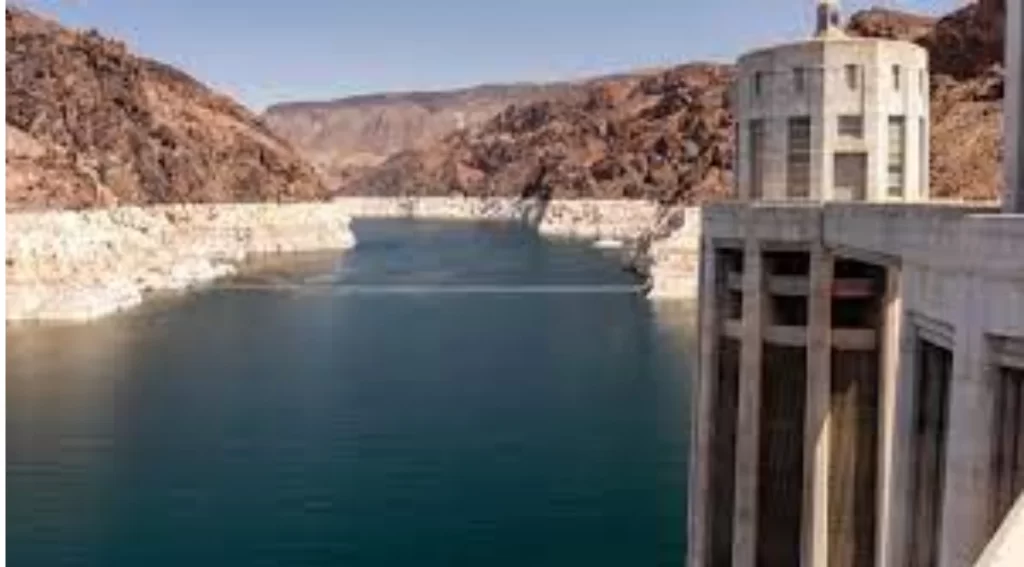Lake Mead Water Level Today Stay informed about the current and its implications for water supply, power generation, and resource management.
Lake Mead Water Level Today, located in the heart of the southwestern United States, is one of the largest man-made reservoirs in the world, created by the Hoover Dam on the Colorado River. Its water level is a subject of constant interest and concern due to its significance for agriculture, recreation, and as a source of drinking water for millions of people in the region. In this article, we delve into the current status of Lake Mead’s water level, examining various factors influencing it and its implications for the surrounding environment and communities.
The Importance of Lake Mead Water Level Today

Lake Mead’s Vital Role in the Region’s Water Supply
Lake Mead Water Level Today serves as a crucial water storage reservoir, providing water for irrigation, municipal use, and hydroelectric power generation to several states, including Nevada, Arizona, and California. Its water level directly impacts the availability of water resources for agriculture, urban development, and energy production across the region. Therefore, monitoring its water level is essential for effective water resource management and planning. Get More Info Lake Mead Water level.
Factors Influencing Lake Mead Water Level Today
Climate Conditions and Precipitation Patterns
Lake Mead Water Level Today One of the primary factors influencing Lake Mead’s water level is the prevailing climate conditions and precipitation patterns in its watershed. Changes in precipitation, including rainfall and snowmelt in the Rocky Mountains, significantly affect the inflow of water into the reservoir. Variability in precipitation levels can lead to fluctuations in the reservoir’s water level, impacting its storage capacity and availability of water resources.
Water Demand and Consumption

The growing population and increasing water demand in the southwestern United States also exert pressure on Lake Mead’s water level. Urbanization, agricultural expansion, and industrial development contribute to higher water consumption rates, leading to greater withdrawals from the reservoir. Balancing water supply and demand is crucial for maintaining sustainable water levels in Lake Mead and meeting the needs of various stakeholders.
Hydrological Conditions and Drought
Periods of drought, coupled with reduced inflows from tributaries, can exacerbate the decline in Lake Mead’s water level. Drought conditions impact the overall water balance in the reservoir, causing water levels to drop below normal levels. Managing water resources during droughts requires implementing conservation measures, water restrictions, and collaborative efforts to mitigate the effects of water scarcity on communities and ecosystems reliant on Lake Mead.
Current Status of Lake Mead Water Level Today
Monitoring and Data Analysis
The United States Bureau of Reclamation regularly monitors Lake Mead’s water level through comprehensive hydrological data collection and analysis. Real-time measurements and forecasts provide valuable insights into the reservoir’s current status and future projections. Stakeholders rely on this information to make informed decisions regarding water allocation, infrastructure planning, and drought response strategies.
Recent Trends and Observations
In recent years, Lake Mead has experienced declining water levels, reaching historically low levels due to prolonged drought conditions and increased water demand. The persistent drought in the region has put significant stress on water resources, prompting concerns about the sustainability of current water management practices. Collaborative efforts are underway to address the challenges posed by declining water levels and ensure the long-term viability of Lake Mead as a vital water supply source.

Implications for Communities and Ecosystems
The decline in Lake Mead Water Level Today has far-reaching implications for communities, economies, and ecosystems dependent on its water resources. Reduced water availability can impact agricultural productivity, municipal water supplies, and recreational activities, affecting livelihoods and quality of life for millions of people. Additionally, changes in water levels can disrupt ecosystems, leading to habitat loss, species displacement, and altered water quality dynamics.
Importance of Lake Mead Water Level
The Lake Mead water level serves as a barometer for the water supply in the arid Southwest. As the largest reservoir in the United States, it not only provides water for irrigation, municipal use, and recreation but also generates hydroelectric power. Understanding the Lake Mead water level today is critical for managing water resources effectively and planning for potential drought conditions.
Factors Influencing Lake Mead Water Level
Several factors impact the Lake Mead water level today, including precipitation, snowpack, evaporation rates, and water usage. Drought conditions in recent years have put significant pressure on the reservoir, leading to concerns about water scarcity and resource management.
Current State of Lake Mead Water Level
As of today, the Lake Mead water level stands at a pivotal point. Monitoring agencies provide real-time data on the reservoir’s elevation, storage capacity, and inflow/outflow rates. This information is crucial for stakeholders to make informed decisions regarding water allocation and conservation efforts.

Implications of Low Lake Mead Water Levels
Low Lake Mead water levels have far-reaching consequences for the environment, agriculture, urban areas, and energy production. Drought conditions can lead to reduced water availability, increased competition among users, and challenges in meeting demand during peak seasons.
Strategies for Managing Lake Mead Water Levels
To address declining Lake Mead water levels, various strategies are being implemented. These include conservation measures, water recycling initiatives, desalination projects, and interstate agreements to optimize water usage and mitigate shortages.
Future Outlook for Lake Mead Water Levels
The future trajectory of Lake Mead’s water levels hinges on a combination of natural factors and human interventions. Climate change projections suggest an increased risk of drought in the region, emphasizing the need for sustainable water management practices and adaptive strategies.
Future Outlook and Sustainability Measures
Adapting to Changing Conditions
As climate change continues to influence precipitation patterns and exacerbate drought conditions in the southwestern United States, proactive measures are essential to adapt to changing water supply dynamics. Implementing water conservation practices, investing in water-efficient technologies, and promoting sustainable land use planning are critical steps towards ensuring the resilience of communities and ecosystems reliant on Lake Mead’s water resources.
Collaborative Solutions and Policy Interventions
Addressing the challenges associated with Lake Mead’s declining water level requires coordinated action among government agencies, water utilities, stakeholders, and the public. Developing comprehensive water management strategies, investing in infrastructure upgrades, and fostering regional cooperation are essential for safeguarding water security and promoting long-term sustainability in the face of evolving environmental pressures. See More Info Travel Tips.
Final Thoughts
Lake Mead’s water level today is a reflection of complex interactions between climate variability, water demand, and hydrological conditions in the southwestern United States. Monitoring and understanding these factors are crucial for effective water resource management and sustainable development in the region. By implementing proactive measures and fostering collaboration, we can address the challenges posed by declining water levels and ensure the resilience of Lake Mead as a critical water supply source for generations to come.
FAQs:
What is the current Lake Mead water level?
As of today, the Lake Mead water level stands at a pivotal point. Monitoring agencies provide real-time data on the reservoir’s elevation, storage capacity, and inflow/outflow rates.
What factors influence Lake Mead’s water levels?
Several factors impact the Lake Mead water level, including precipitation, snowpack, evaporation rates, and water usage. Drought conditions in recent years have put significant pressure on the reservoir.
What are the implications of low Lake Mead water levels?
Low Lake Mead water levels have far-reaching consequences for the environment, agriculture, urban areas, and energy production. Drought conditions can lead to reduced water availability, increased competition among users, and challenges in meeting demand during peak seasons.



